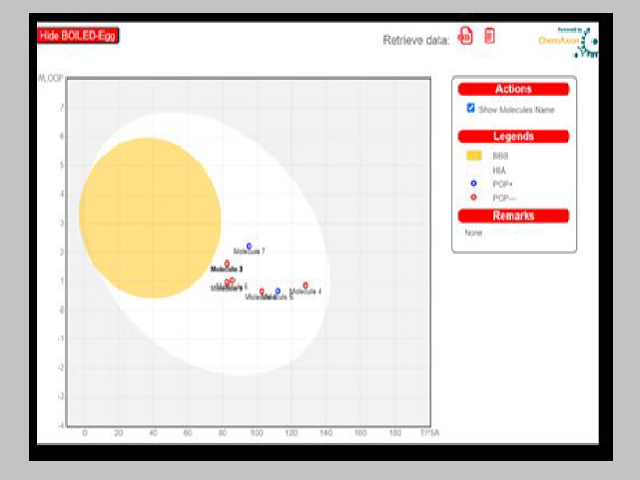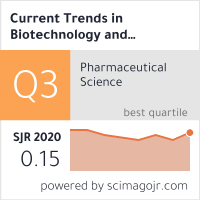In Silico Design and Solvent Free Synthesis of Some Novel Dihydropyrimidinthione Derivatives and Study of its Antimicrobial Activity
DOI:
https://doi.org/10.5530/ctbp.2022.3s.70Keywords:
Solvent free synthesis, SWISS ADME, MOLINSPIRATION, OSIRIS, AUTODOCK 4.2Abstract
According to WHO, 700,000 people were affected by antibiotic resistance per year and it becomes a serious threat to global health. Keeping in view this observation and emerging need of new drug candidates to overcome the antibiotic resistance and also to fight against the emerging diseases, the present research study focussed on to develop some novel antimicrobial agents. The study involved Insilico design and solvent free synthesis of some novel dihydropyrimidinthione derivatives and study of its antimicrobial activity. The purity of the synthesized compounds was confirmed by TLC and melting point determination. The structures of the synthesized compounds were characterized, predicted using CHEMSKETCH, CHEM DRAW and MARVIN SKETCH software. Drug likeness properties were studied using MOLINSPIRATION software. All the synthesized compounds obey the Lipinski rule of Five. Insilico ADME studies were performed using SWISS ADME online web tool, toxicity profile studied using OSIRIS property explorer software for all the designed compounds only compound F was found to be tumorogenic . The docking study was performed for all thedesigned compounds against the targeted enzyme Tyrosyl t-RNA Ligase Synthetase (1JIL) using AUTODOCK 4.2 software. The docking results showed Compound A, C and D produced good binding affinity and Compound B showed significant binding score (-8.30 kcal/mol) compared to standard ciprofloxacin (-7.32 kcal/mol) Based on the docking score compounds A, B, C, and F were screened for their in vitro antibacterial activity against gram positive and gram-negative organisms using well diffusion method at the concentration of 100μg/ml. Compound A, B, C and D showed the good antibacterial activity compared to standard ciprofloxacin at the concentration of 100μg/ml.



